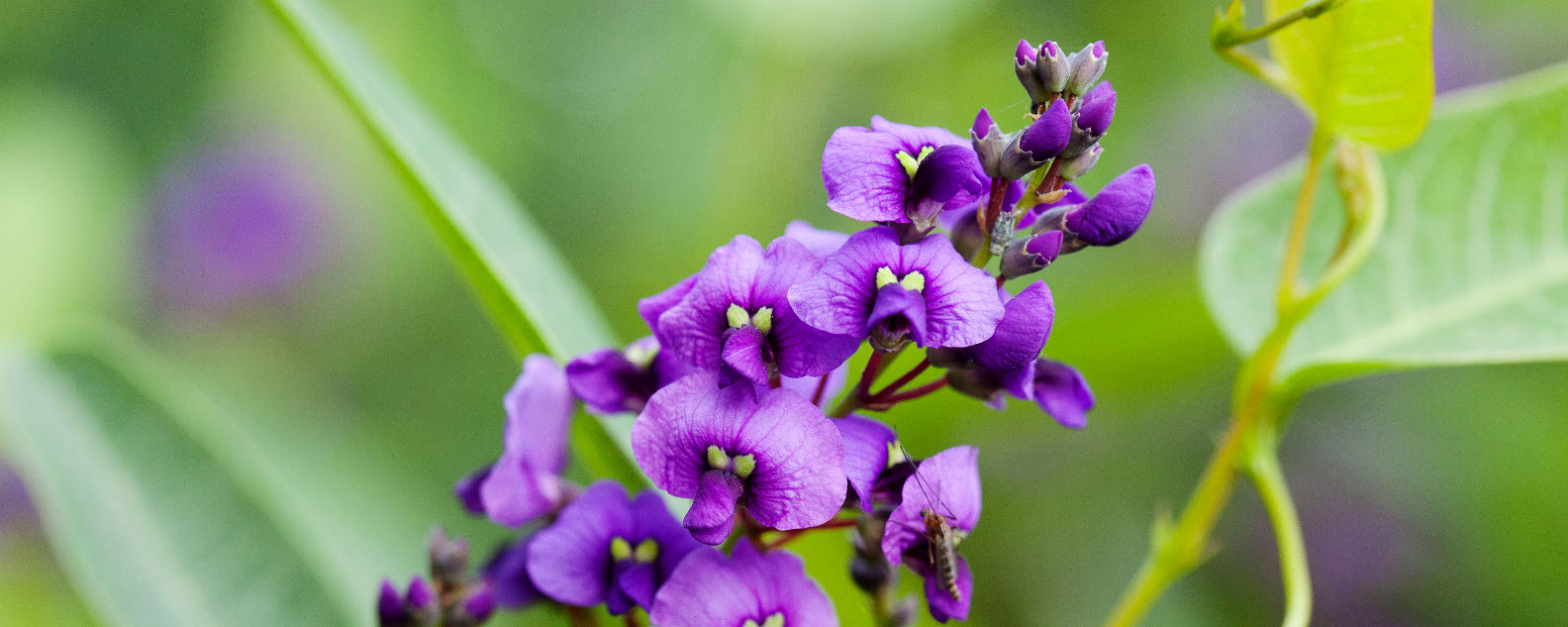Growing Purple Coral Pea
Hardenbergia violacea is hard to go past if you’re wanting to design a garden that’s colourful, low maintenance and fast-growing.

General planting and care
Hardenbergia violacea, Purple Coral Pea or False Sarsaparilla, is a climbing or prostrate plant found in many parts of Australia.
A number of varieties have been developed for gardens including Flat White™ and Carpet Royale™, both in white and mauve. These are fast-growing, low-maintenance, heavy flowering, shallow-rooted plants with long trailing stems forming a dense mat, and unlike most other varieties of Hardenbergia, these can be used in a variety of positions in the garden as they do not climb.
Planting conditions
A full sun to part shade position is preferred in a wide range of soil types including light clay or sand however, these cultivars will grow best in an enriched, well-drained acid soil on a raised bed with a pH of 5.5 to 6.0.
They possess a low frost tolerance when young and can sustain significant leaf damage but will become hardier with age.
Transplanting
We recommend that you do not transplant Hardenbergia violacea once established.
Irrigation
Avoid wetting Hardenbergia violacea's foliage to minimise possible fungal problems. Monitor watering levels in the first season after planting and during the warmer months of the year to maintain adequate soil moisture.
Fertiliser
Fertilise with a general purpose three to four-month slow-release fertiliser in spring and autumn. Supplementary applications of a complete liquid fertiliser at two to three weekly intervals will assist with plant health and vigour.
A liquid feed of magnesium sulphate (Epsom salts) and iron chelates in April will also assist in maintaining strong vigour prior to flowering, especially in sandy soils.
Mulching
After planting your Hardenbergia, we recommend mulching to a depth of 5 cm to conserve soil moisture and assist with plant health.
Pruning
For shrub forms, pruning after flowering will increase vigour and create a bushier plant with increased flowering in the following season.
Pests and diseases
Hardenbergia violacea are susceptible to powdery mildew during cool moist weather and should be monitored and treated with an appropriate organic fungicide, if necessary. Fungal problems can be minimised by avoiding foliage wetting during irrigation and by periodically removing dead leaves to improve air circulation.
Monitoring plants for evidence of leaf damage should be carried out to avoid major pest infestations, such as leaf-chewing caterpillars. Scale insects and mealy bugs can also become a problem in crowded situations
Discover native plant lovers' best-kept secret!
If you're looking for a nursery near the CBD selling native plants, visit the Growing Friends Plant Sales at The Royal Botanic Garden Sydney – there's plenty of metered parking and public transport nearby. Visit our Getting Here pages to learn more.